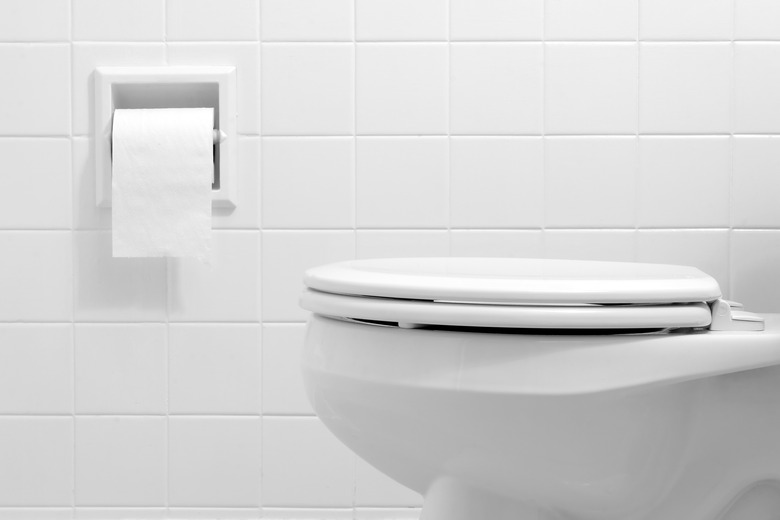How To Use Vinegar And Baking Soda To Clean A Toilet
We may receive a commission on purchases made from links.
Scrubbing toilets isn't your idea of a fun Saturday, but it has to be done to keep the smells, stains, and mildew at bay. While the cleaning section in your favorite store has no shortage of specialty toilet cleaners, you can also use the vinegar and baking soda that you already have in your pantry. They're effective and safe bathroom cleaners for all types of surfaces, including your porcelain throne.
Vinegar and Baking Soda Benefits
Vinegar and Baking Soda Benefits
Many commercially produced toilet cleaners are full of harsh, strong chemicals, including hydrochloric acid, which can be corrosive and cause a variety of symptoms, including burns, pain, and vision loss if it touches your body. It can also be hard on the environment. Vinegar and baking soda are both safe ingredients that won't hurt you (outside of offending your sense of smell) and are gentle on the environment and your plumbing.
Vinegar and baking soda are also both safe for septic systems unlike many other toilet bowl cleaners. Many store-bought cleaners contain chlorine bleach, ammonia, and other harsh chemicals that can kill the good bacteria that your septic system needs to function properly. Baking soda and vinegar don't affect the septic tank bacteria.
Things Needed
-
Baking soda
-
Essential oils (optional)
-
Glass bowl
-
Wooden spoon
-
Toilet-cleaning brush
How to Clean Toilets With Baking Soda and Vinegar
1. Flush the Toilet
Start with clean water by flushing the toilet once or twice to clear everything out of it.
2. Add Essential Oils to Baking Soda
Dispense several drops of pure essential oils into 1 cup of baking soda if desired. It's not required, but it can give you some extra cleaning power. Effective essential oils that may help kill bacteria include tea tree, lemongrass, and eucalyptus oils. Mix the baking soda and essential oils together in a glass bowl with a wooden spoon.
3. Pour Vinegar Into the Toilet
Measure 1 cup of cleaning vinegar, which is 20 percent stronger than regular distilled white vinegar because of its higher acidity, and pour it into the toilet. The higher acidity makes it more effective at tackling difficult toilet stains without being too harsh, but you can also use regular distilled vinegar. Wait about five minutes for the vinegar to start working on the gunk and stains.
4. Add Baking Soda
Sprinkle the cup of baking soda into the toilet bowl, spreading it around evenly and getting some on the upper portion of the bowl.
5. Add More Vinegar
Pour in 1 or 2 cups of additional cleaning or distilled vinegar. You'll start to see the bubbling reaction immediately. Pour the vinegar slowly so the reaction doesn't bubble up and over the sides of the toilet bowl. Wait at least 10 more minutes to give the natural cleaners time to work.
6. Clean the Stains
Scrub all surfaces inside your toilet bowl using a scrub brush. They should come off easily, but some difficult stains might require more elbow grease. You can repeat the vinegar and baking soda addition or let it sit for another 30 minutes without adding more and scrub again if you still have stains on the toilet.
7. Flush Again
Give the toilet a final flush once you're happy with the results.
Warning
Never add bleach or toilet bowl cleaner containing bleach to vinegar. Combining bleach and vinegar creates a dangerous gas in your bathroom. Even after you flush the toilet, some of the previous cleaner you used can remain.
